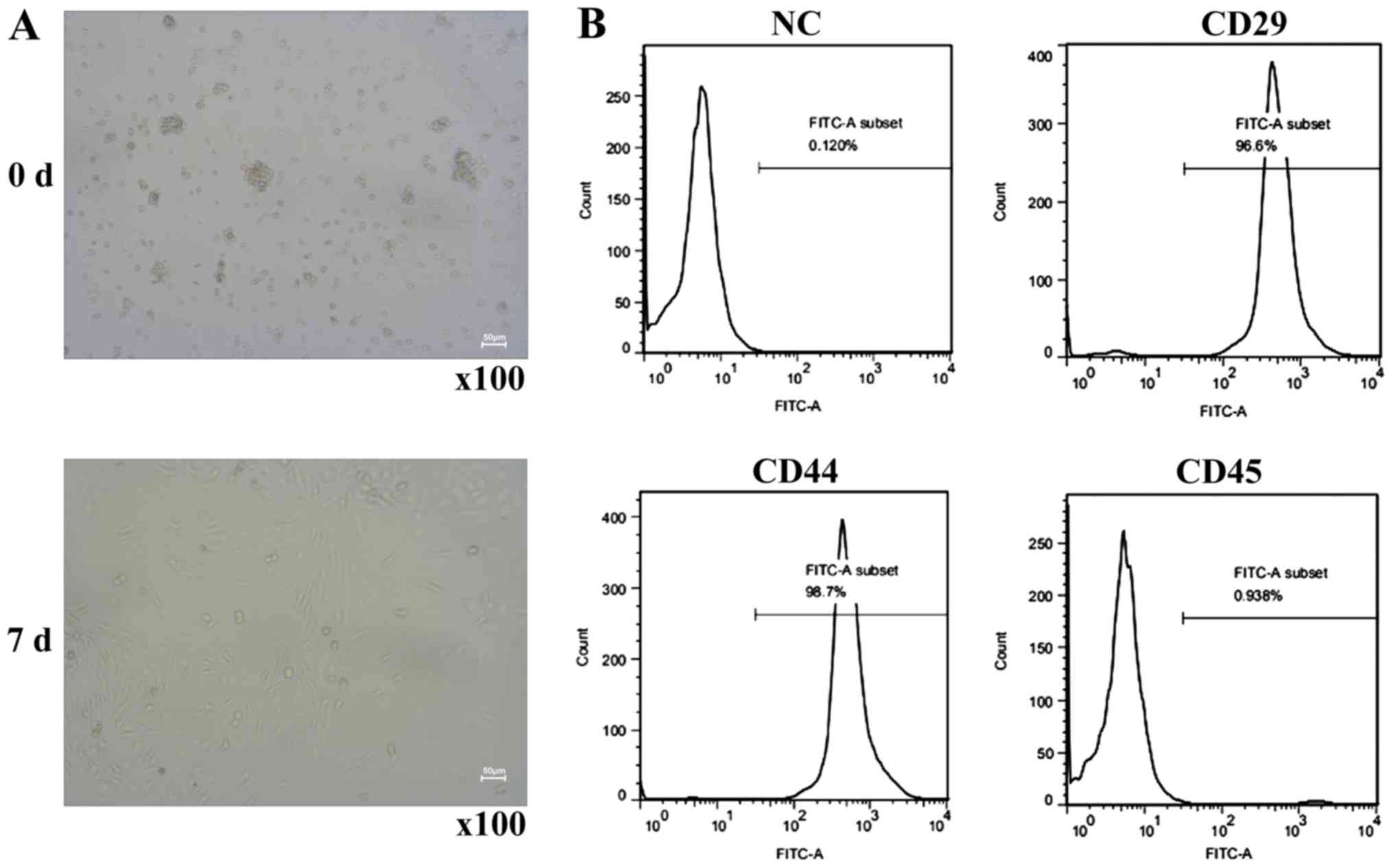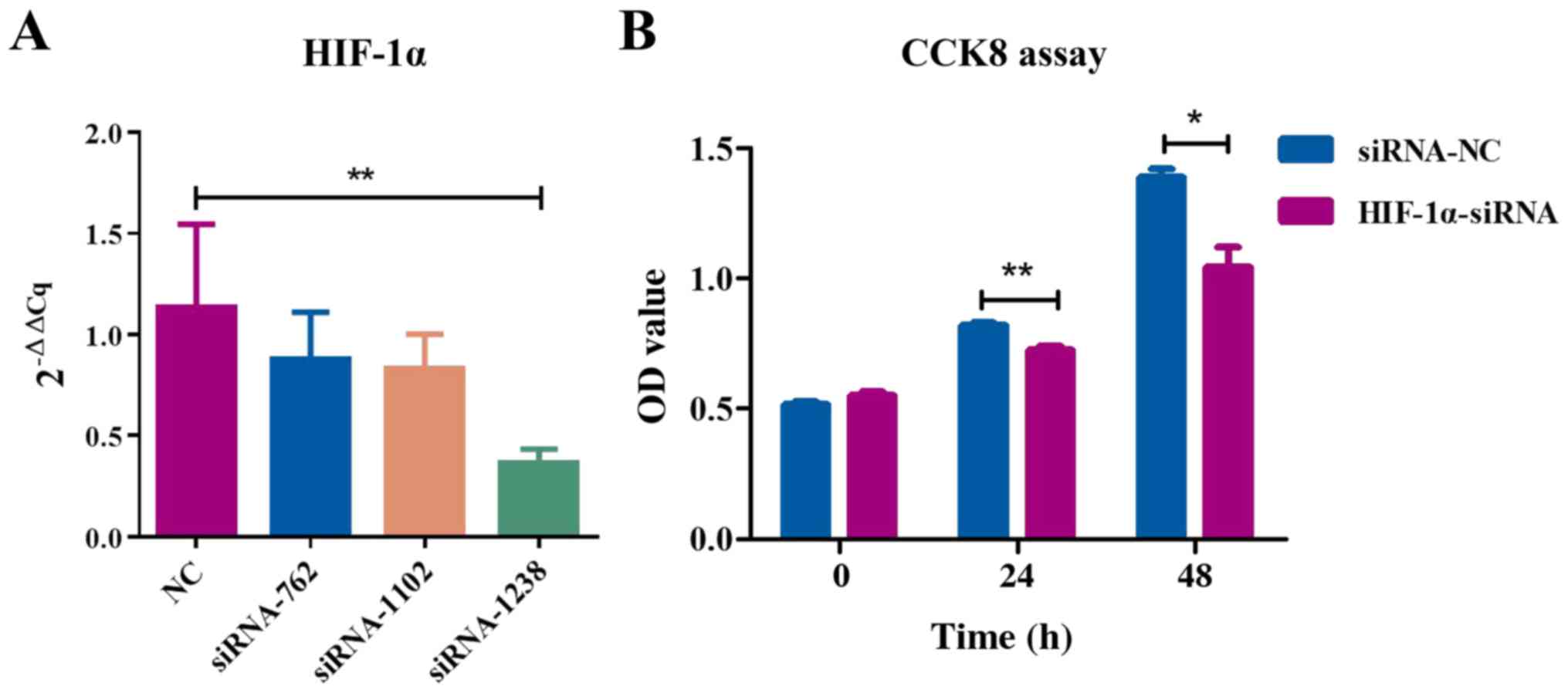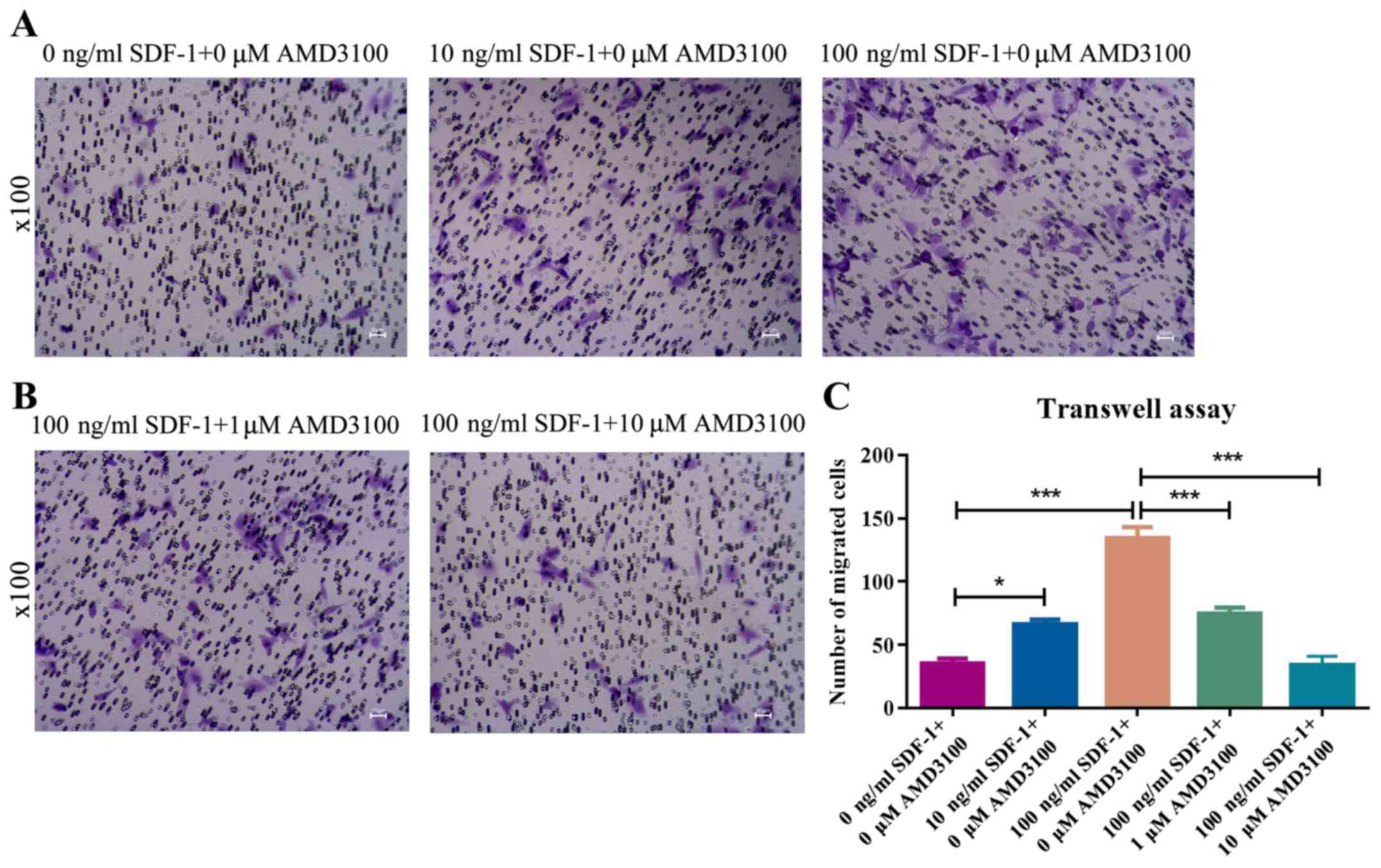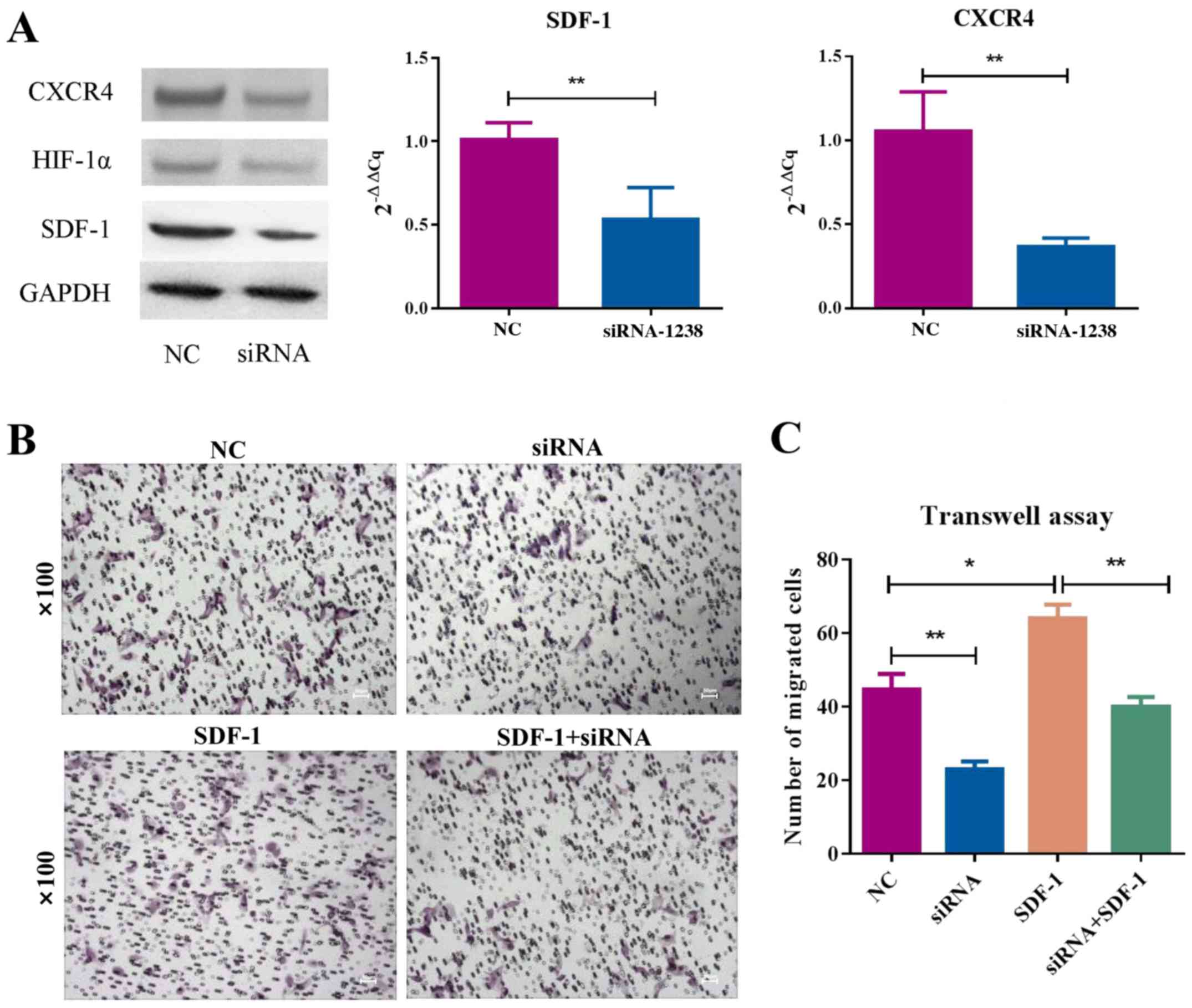|
1
|
van Baardewijk LJ, van der Ende J,
Lissenberg-Thunnissen S, Romijn LM, Hawinkels LJA, Sier CFM and
Schipper IB: Circulating bone morphogenetic protein levels and
delayed fracture healing. Int Orthop. 37:2767–527. 2013. View Article : Google Scholar
|
|
2
|
Hara Y, Ghazizadeh M, Shimizu H, Matsumoto
H, Saito N, Yagi T, Mashiko K, Mashiko K, Kawai M and Yokota H:
Delayed expression of circulating TGF-β1 and BMP-2 levels in human
nonunion long bone fracture healing. J Nippon Med Sch. 84:12–18.
2017. View Article : Google Scholar : PubMed/NCBI
|
|
3
|
Hankenson KD, Zimmerman G and Marcucio R:
Biological perspectives of delayed fracture healing. Injury. 45
(Suppl 2):S8–S15. 2014. View Article : Google Scholar : PubMed/NCBI
|
|
4
|
Seemann R, Graef F, Garbe A, Keller J,
Huang F, Duda G, Schmidt-Bleek K, Schaser KD and Tsitsilonis S:
Leptin-deficiency eradicates the positive effect of traumatic brain
injury on bone healing: Histological analyses in a combined trauma
mouse model. J Musculoskelet Neuronal Interact. 18:32–41.
2018.PubMed/NCBI
|
|
5
|
Huang H, Cheng WX, Hu YP, Chen JH, Zheng
ZT and Zhang P: Relationship between heterotopic ossification and
traumatic brain injury: Why severe traumatic brain injury increases
the risk of heterotopic ossification. J Orthop Translat. 12:16–25.
2018. View Article : Google Scholar : PubMed/NCBI
|
|
6
|
Liu S, Liu Y, Jiang L, Li Z, Lee S, Liu C,
Wang J and Zhang J: Recombinant human BMP-2 accelerates the
migration of bone marrow mesenchymal stem cells via the
CDC42/PAK1/LIMK1 pathway in vitro and in vivo. Biomater Sci.
7:362–372. 2018. View Article : Google Scholar : PubMed/NCBI
|
|
7
|
Manzano-Moreno FJ, Medina-Huertas R,
Ramos-Torrecillas J, García-Martínez O and Ruiz C: The effect of
low-level diode laser therapy on early differentiation of
osteoblast via BMP-2/TGF-β1 and its receptors. J Craniomaxillofac
Surg. 43:1926–1932. 2015. View Article : Google Scholar : PubMed/NCBI
|
|
8
|
Wang T, Guo S and Zhang H: Synergistic
effects of controlled-released BMP-2 and VEGF from nHAC/PLGAs
scaffold on osteogenesis. BioMed Res Int.
2018:35164632018.PubMed/NCBI
|
|
9
|
Quarles LD: Fibroblast growth factor 23
and α-Klotho co-dependent and independent functions. Curr Opin
Nephrol Hypertens. 28:16–25. 2019. View Article : Google Scholar : PubMed/NCBI
|
|
10
|
Wan C, Shao J, Gilbert SR, Riddle RC, Long
F, Johnson RS, Schipani E and Clemens TL: Role of HIF-1alpha in
skeletal development. Ann N Y Acad Sci. 1192:322–326. 2010.
View Article : Google Scholar : PubMed/NCBI
|
|
11
|
Tirpe AA, Gulei D, Ciortea SM, Crivii C
and Berindan-Neagoe I: Hypoxia: Overview on hypoxia-mediated
mechanisms with a focus on the role of HIF genes. Int J Mol Sci.
20:61402019. View Article : Google Scholar
|
|
12
|
Kanichai M, Ferguson D, Prendergast PJ and
Campbell VA: Hypoxia promotes chondrogenesis in rat mesenchymal
stem cells: A role for AKT and hypoxia-inducible factor
(HIF)-1alpha. J Cell Physiol. 216:708–715. 2008. View Article : Google Scholar : PubMed/NCBI
|
|
13
|
Kim A and Ma JY: Rhaponticin decreases the
metastatic and angiogenic abilities of cancer cells via suppression
of the HIF1α pathway. Int J Oncol. 53:1160–1170. 2018.PubMed/NCBI
|
|
14
|
Luo Y, Cai J, Xue H, Miura T and Rao MS:
Functional SDF1 alpha/CXCR4 signaling in the developing spinal
cord. J Neurochem. 93:452–462. 2005. View Article : Google Scholar : PubMed/NCBI
|
|
15
|
Knerlich-Lukoschus F, von der Ropp-Brenner
B, Lucius R, Mehdorn HM and Held-Feindt J: Spatiotemporal CCR1,
CCL3(MIP-1α), CXCR4, CXCL12(SDF-1α) expression patterns in a rat
spinal cord injury model of posttraumatic neuropathic pain. J
Neurosurg Spine. 14:583–597. 2011. View Article : Google Scholar : PubMed/NCBI
|
|
16
|
Merino JJ, Gutiérrez-Fernández M,
Rodríguez-Frutos B, Alvarez-Grech J, Alcalde ME, Vallejo-Cremades
MT and Díez-Tejedor E: CXCR4/SDF-1α-chemokine regulates
neurogenesis and/or angiogenesis within the vascular niche of
ischemic rats; however, does SDF-1α play a role in repair? Int J
Stroke. 6:466–467. 2011. View Article : Google Scholar : PubMed/NCBI
|
|
17
|
Petit I, Jin D and Rafii S: The
SDF-1-CXCR4 signaling pathway: A molecular hub modulating
neo-angiogenesis. Trends Immunol. 28:299–307. 2007. View Article : Google Scholar : PubMed/NCBI
|
|
18
|
Wen J, Zhang JQ, Huang W and Wang Y:
SDF-1α and CXCR4 as therapeutic targets in cardiovascular disease.
Am J Cardiovasc Dis. 2:20–28. 2012.PubMed/NCBI
|
|
19
|
Liu X, Zheng L, Zhou Y, Chen Y, Chen P and
Xiao W: BMSC transplantation aggravates inflammation, oxidative
stress, and fibrosis and impairs skeletal muscle regeneration.
Front Physiol. 10:872019. View Article : Google Scholar : PubMed/NCBI
|
|
20
|
Livak KJ and Schmittgen TD: Analysis of
relative gene expression data using real-time quantitative PCR and
the 2(-Delta Delta C(T)) method. Methods. 25:402–408. 2001.
View Article : Google Scholar : PubMed/NCBI
|
|
21
|
Knight MN and Hankenson KD: Mesenchymal
stem cells in bone regeneration. Adv Wound Care (New Rochelle).
2:306–316. 2013. View Article : Google Scholar : PubMed/NCBI
|
|
22
|
Yuan G, Peng YJ, Reddy VD, Makarenko VV,
Nanduri J, Khan SA, Garcia JA, Kumar GK, Semenza GL and Prabhakar
NR: Mutual antagonism between hypoxia-inducible factors 1α and 2α
regulates oxygen sensing and cardio-respiratory homeostasis. Proc
Natl Acad Sci USA. 110:E1788–E1796. 2013. View Article : Google Scholar : PubMed/NCBI
|
|
23
|
Maes C: Signaling pathways effecting
crosstalk between cartilage and adjacent tissues: Seminars in cell
and developmental biology: The biology and pathology of cartilage.
Semin Cell Dev Biol. 62:16–33. 2017. View Article : Google Scholar : PubMed/NCBI
|
|
24
|
Johnson RW, Schipani E and Giaccia AJ: HIF
targets in bone remodeling and metastatic disease. Pharmacol Ther.
150:169–177. 2015. View Article : Google Scholar : PubMed/NCBI
|
|
25
|
Zhou N, Hu N, Liao JY, Lin LB, Zhao C, Si
WK, Yang Z, Yi SX, Fan TX, Bao W, et al: HIF-1α as a regulator of
BMP2-induced chondrogenic differentiation, osteogenic
differentiation, and endochondral ossification in stem cells. Cell
Physiol Biochem. 36:44–60. 2015. View Article : Google Scholar : PubMed/NCBI
|
|
26
|
Lampert FM, Kutscher C, Stark GB and
Finkenzeller G: Overexpression of Hif-1α in mesenchymal stem cells
affects cell-autonomous angiogenic and osteogenic parameters. J
Cell Biochem. 117:760–768. 2016. View Article : Google Scholar : PubMed/NCBI
|
|
27
|
Kucia M, Ratajczak J, Reca R,
Janowska-Wieczorek A and Ratajczak MZ: Tissue-specific muscle,
neural and liver stem/progenitor cells reside in the bone marrow,
respond to an SDF-1 gradient and are mobilized into peripheral
blood during stress and tissue injury. Blood Cells Mol Dis.
32:52–57. 2004. View Article : Google Scholar : PubMed/NCBI
|
|
28
|
Sun J, Zhao Y, Li Q, Chen B, Hou X, Xiao Z
and Dai J: Controlled release of collagen-binding SDF-1α improves
cardiac function after myocardial infarction by recruiting
endogenous stem cells. Sci Rep. 6:266832016. View Article : Google Scholar : PubMed/NCBI
|
|
29
|
Ji JF, He BP, Dheen ST and Tay SS:
Interactions of chemokines and chemokine receptors mediate the
migration of mesenchymal stem cells to the impaired site in the
brain after hypoglossal nerve injury. Stem cells. 22:415–427. 2004.
View Article : Google Scholar : PubMed/NCBI
|
|
30
|
Yu Q, Liu L, Lin J, Wang Y, Xuan X, Guo Y
and Hu S: SDF-1α/CXCR4 axis mediates the migration of mesenchymal
stem cells to the hypoxic-ischemic brain lesion in a rat model.
Cell J. 16:440–447. 2015.PubMed/NCBI
|
|
31
|
Kortesidis A, Zannettino A, Isenmann S,
Shi S, Lapidot T and Gronthos S: Stromal-derived factor-1 promotes
the growth, survival, and development of human bone marrow stromal
stem cells. Blood. 105:3793–3801. 2005. View Article : Google Scholar : PubMed/NCBI
|
|
32
|
Periyasamy-Thandavan S, Burke J, Mendhe B,
Kondrikova G, Kolhe R, Hunter M, Isales CM, Hamrick MW, Hill WD and
Fulzele S: MicroRNA-141-3p negatively modulates SDF-1 expression in
age-dependent pathophysiology of human and murine bone marrow
stromal cells. J Gerontol A Biol Sci Med Sci. 74:1368–1374. 2019.
View Article : Google Scholar : PubMed/NCBI
|
|
33
|
Kristocheck M, Dias LD, Ghem C, Eibel B,
Kalil RAK and Markoski MM: The homing of bone marrow stem cells is
differentially activated in ischemic and valvular heart diseases
and influenced by beta-blockers. J Transl Med. 16:1332018.
View Article : Google Scholar : PubMed/NCBI
|
|
34
|
van Buul JD, Voermans C, van Gelderen J,
Anthony EC, van der Schoot CE and Hordijk PL: Leukocyte-endothelium
interaction promotes SDF-1-dependent polarization of CXCR4. J Biol
Chem. 278:30302–30310. 2003. View Article : Google Scholar : PubMed/NCBI
|
|
35
|
Sun X, Wei L, Chen Q and Terek RM:
CXCR4/SDF1 mediate hypoxia induced chondrosarcoma cell invasion
through ERK signaling and increased MMP1 expression. Mol Cancer.
9:172010. View Article : Google Scholar : PubMed/NCBI
|
|
36
|
Liu H, Liu S, Li Y, Wang X, Xue W, Ge G
and Luo X: The role of SDF-1-CXCR4/CXCR7 axis in the therapeutic
effects of hypoxia-preconditioned mesenchymal stem cells for renal
ischemia/reperfusion injury. PLoS One. 7:e346082012. View Article : Google Scholar : PubMed/NCBI
|
|
37
|
Schioppa T, Uranchimeg B, Saccani A,
Biswas SK, Doni A, Rapisarda A, Bernasconi S, Saccani S, Nebuloni
M, Vago L, et al: Regulation of the chemokine receptor CXCR4 by
hypoxia. J Exp Med. 198:1391–1402. 2003. View Article : Google Scholar : PubMed/NCBI
|
|
38
|
Ceradini DJ, Kulkarni AR, Callaghan MJ,
Tepper OM, Bastidas N, Kleinman ME, Capla JM, Galiano RD, Levine JP
and Gurtner GC: Progenitor cell trafficking is regulated by hypoxic
gradients through HIF-1 induction of SDF-1. Nat Med. 10:858–864.
2004. View
Article : Google Scholar : PubMed/NCBI
|
|
39
|
Liu X, Zhou C, Li Y, Ji Y, Xu G, Wang X
and Yan J: SDF-1 promotes endochondral bone repair during fracture
healing at the traumatic brain injury condition. PLoS One.
8:e540772013. View Article : Google Scholar : PubMed/NCBI
|


















